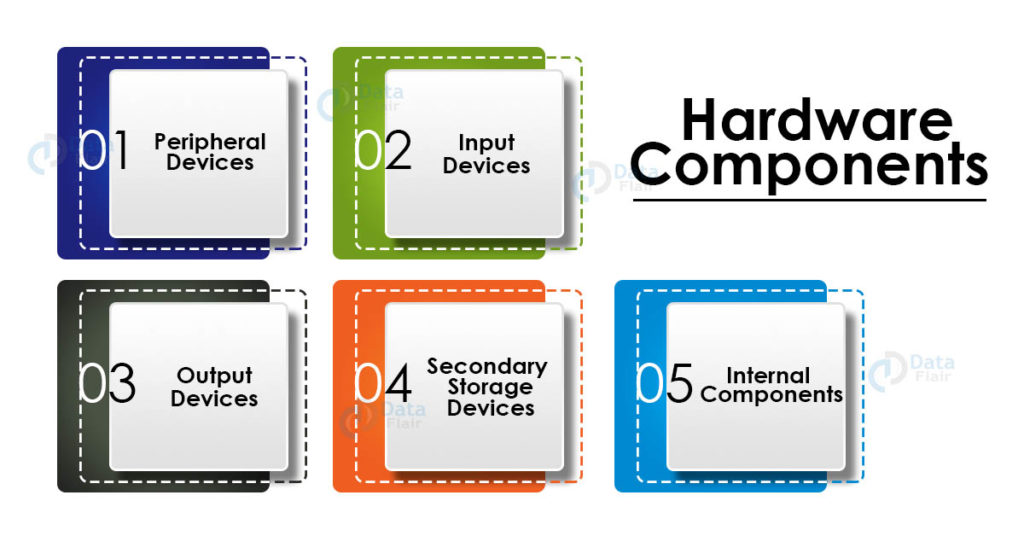Understanding the Basics of Computer Hardware Components introduces us to the intricate world of technology that powers our daily lives. From the moment we power on our devices, a fascinating array of components works in harmony to deliver performance and functionality. This exploration reveals how each part plays a crucial role, whether it’s the processor that executes commands or the memory that stores data, making it essential for anyone looking to deepen their knowledge of computers.
As we delve deeper, we uncover the significance of each hardware component, their interconnections, and how they collectively influence the overall performance of a computer system. This journey not only enhances our understanding but also empowers us to make informed choices when upgrading or troubleshooting our devices.
In the fast-paced world we live in, having a grasp on effective communication is more crucial than ever. Whether it’s in the workplace, at home, or in social settings, being able to convey your thoughts clearly and respectfully can open countless doors and foster better relationships. In this article, we’re going to explore the importance of communication, the different types, methods to enhance it, and how it can significantly impact our day-to-day interactions and overall success.
First off, let’s define what we mean by communication. At its core, communication is the act of transferring information from one place to another—whether that be through spoken words, written text, non-verbal signals, or even body language. It’s a fundamental skill that we develop from a young age and continue to refine throughout our lives.
There are several types of communication, each of which plays a vital role in how we connect with others. The four primary types include verbal communication, non-verbal communication, written communication, and visual communication. Verbal communication involves the use of spoken language, which can be face-to-face or via digital means like phone calls and video chats. Non-verbal communication includes body language, facial expressions, and eye contact—elements that often convey more than words themselves.
Written communication encompasses emails, reports, texts, and any other written form of interaction, while visual communication makes use of images, infographics, and other visual aids to convey information.
In our increasingly digital world, the way we communicate has transformed dramatically. Traditional face-to-face interactions are often replaced by virtual meetings and instant messaging. While this offers convenience and accessibility, it can also lead to misunderstandings due to the lack of non-verbal cues. Hence, it’s essential to adapt our communication methods to suit the platform we are utilizing. For instance, whilst sending an email, one must be careful with tone, clarity, and structure to ensure the message is interpreted as intended.
To effectively enhance one’s communication skills, there are several strategies one can adopt. Active listening is paramount; it involves not just hearing what someone is saying but also understanding the message they are conveying. This means engaging with the speaker, asking questions for clarity, and providing feedback. Another significant aspect is to be empathetic. Putting yourself in another person’s shoes can drastically improve how you communicate, leading to more meaningful and productive conversations.
Furthermore, clarity is key. When communicating, it’s vital to express your thoughts concisely. Avoiding jargon, using simple language, and structuring your ideas coherently can help ensure that your message is understood. Additionally, being aware of your non-verbal cues is equally important. Posture, gestures, and facial expressions can all impact how your message is received.
A positive demeanor can enhance the reception of your words, making the conversation more engaging.

Another useful tool in the arsenal of effective communication is feedback. Constructive feedback should be both given and received openly. This not only helps in personal and professional growth but also fosters a culture of trust and openness in relationships. When providing feedback, be specific about what was done well and what could be improved, and when receiving it, approach it with an open mind and a willingness to learn.
In professional settings, communication can significantly affect team dynamics and productivity. Clear communication fosters collaboration, minimizes errors, and builds trust among team members. On the contrary, miscommunication can lead to frustration, conflict, and inefficiency. To address this, companies are increasingly investing in training programs focused on improving communication skills among their employees. Workshops, role-playing, and team-building activities can all enhance interpersonal communication within teams.
Moreover, the rise of remote work has amplified the need for strong communication skills. With teams operating from various locations, clarity and consistency in communication are crucial. Tools such as Slack, Zoom, and Microsoft Teams have become integral in facilitating effective virtual communication. However, these tools can only be effective if the individuals using them have a solid foundation in communication principles.
Outside the workplace, effective communication is equally important in our personal lives. Whether it’s resolving conflicts, expressing feelings, or simply connecting with friends and family, how we convey our messages can make all the difference. For instance, during disagreements, it’s important to communicate your feelings calmly and respectfully, focusing on the issue rather than attacking the person. This practice helps maintain healthy relationships and paves the way for resolution.
Additionally, nurturing relationships through regular check-ins and open dialogues can strengthen bonds. Expressing appreciation, celebrating achievements, and discussing challenges can foster a supportive environment, whether at home or among friends.
In conclusion, communication is an essential skill that permeates every aspect of our lives. By understanding its various forms, applying effective strategies, and continuously honing our abilities, we can enhance our interactions with others significantly. Whether in professional settings or personal relationships, effective communication can lead to greater understanding, collaboration, and overall success. So, let’s embrace the power of communication and strive to connect better with those around us!



